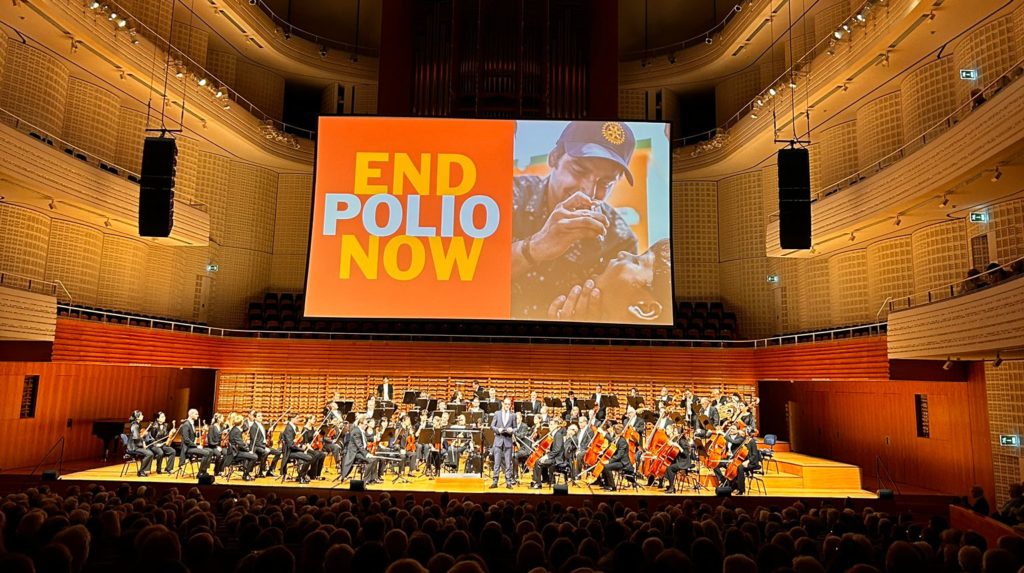Columbus launches traffic enforcement to curb deadly crashes – WTTE

Report on Columbus Traffic Safety Initiative and Alignment with Sustainable Development Goals
Executive Summary
In response to a significant increase in traffic-related fatalities, municipal authorities in Columbus, Ohio, have launched a targeted enforcement initiative. This program, a collaboration between the Columbus Division of Police and the city’s “Vision Zero” platform, directly addresses critical targets within the United Nations Sustainable Development Goals (SDGs), particularly SDG 3 (Good Health and Well-being) and SDG 11 (Sustainable Cities and Communities). The primary objective is to mitigate accidents caused by speeding and distracted driving, with an ultimate goal of achieving zero traffic fatalities by 2035.
Problem Analysis: Road Safety and Community Well-being
A recent surge in fatal traffic incidents has compromised public safety and diminished the quality of life for residents in key urban corridors. The situation highlights a direct challenge to creating safe and inclusive community environments.
- At least five traffic-related fatalities were recorded in July alone.
- Seven fatalities have occurred within the seven corridors now targeted by the new initiative.
- Residents report living in fear due to the frequency and severity of accidents, impacting their family’s ability to safely utilize outdoor public spaces. This erosion of perceived safety is a barrier to community well-being as outlined in SDG 3.
Strategic Response: The ‘Vision Zero’ Enforcement Initiative
A multi-faceted enforcement strategy has been deployed throughout August, a period characterized by increased pedestrian and vehicular traffic. The initiative is designed not only for punitive action but also for educational impact and heightened driver awareness.
- Partnership: The initiative is a joint effort between the Columbus Division of Police and the “Vision Zero” program.
- Targeted Zones: Enforcement is concentrated on seven high-risk corridors identified as having a high incidence of fatal accidents.
- Enforcement Focus: The primary targets are unsafe driving behaviors, specifically speeding and distracted driving.
- Operational Visibility: A high-visibility presence is being maintained through the deployment of bicycle patrols, motorcycle units, and traditional police cruisers.
- Educational Approach: Officers may issue warnings in lieu of citations to emphasize education and awareness as a primary tool for behavioral change.
Direct Alignment with Sustainable Development Goals (SDGs)
The Columbus traffic safety initiative serves as a practical application of global sustainability principles at the municipal level.
SDG 3: Good Health and Well-being
- The program directly addresses Target 3.6, which calls for a reduction in global deaths and injuries from road traffic accidents.
- The stated goal of “Vision Zero”—to have no traffic fatalities by 2035—represents a long-term commitment to ensuring the health and safety of all road users.
- By reducing accidents, the initiative works to prevent injury and death, thereby promoting physical and mental well-being within the community.
SDG 11: Sustainable Cities and Communities
- The initiative is a clear action toward Target 11.2, which aims to provide access to safe, affordable, and sustainable transport systems for all by improving road safety.
- By making major transportation corridors safer, the city is enhancing the sustainability and livability of its urban environment.
- The program fosters more inclusive communities by ensuring that streets are safer for all residents, including pedestrians, cyclists, returning students, and children.
Conclusion and Future Outlook
The enforcement initiative is expected to yield an immediate reduction in vehicle speeds and crash incidents within the targeted zones. The program is not a short-term measure; officials plan to expand the enforcement model to other neighborhoods after the initial phase concludes. This sustained effort underscores a commitment to progressively realizing the “Vision Zero” objective, aligning the city’s public safety strategy with the long-term vision of the Sustainable Development Goals.
1. Which SDGs are addressed or connected to the issues highlighted in the article?
SDG 3: Good Health and Well-being
- The article directly addresses public health and safety by focusing on the prevention of deaths and injuries from road traffic accidents. The core issue is the “rash of deadly traffic accidents” in Columbus, with the stated goal of reducing fatalities and making the community safer, which is central to ensuring healthy lives and promoting well-being.
SDG 11: Sustainable Cities and Communities
- The initiative described in the article aims to make the city of Columbus safer and more sustainable for its residents. By targeting dangerous traffic corridors, the “Vision Zero” program and the police are working to improve urban road safety, which is a key component of making cities inclusive, safe, resilient, and sustainable. The article mentions the fear of residents like Richard Oppong and the specific vulnerability of pedestrians and students, highlighting the need for safer urban environments.
2. What specific targets under those SDGs can be identified based on the article’s content?
-
Target 3.6: By 2020, halve the number of global deaths and injuries from road traffic accidents.
- Although the 2020 deadline for this target has passed, the article’s content is directly aligned with its objective. The entire initiative is a response to traffic fatalities. The city’s ultimate goal “to have no traffic fatalities by 2035” is a local-level commitment that mirrors the global ambition of this target to drastically reduce deaths from road accidents.
-
Target 11.2: By 2030, provide access to safe, affordable, accessible and sustainable transport systems for all, improving road safety…
- The article focuses on the “improving road safety” aspect of this target. The partnership between the police and the “Vision Zero” program is a direct effort to create a safer transport environment. The focus on making “corridors are much safer” for drivers, pedestrians (“more people are on the sidewalks”), and cyclists (“Bicycle and motorcycles”) directly supports the goal of providing safe transport systems for everyone in the community.
3. Are there any indicators mentioned or implied in the article that can be used to measure progress towards the identified targets?
-
Indicator for Target 3.6 (related to official indicator 3.6.1: Death rate due to road traffic injuries)
- The article provides specific data points that serve as a baseline for this indicator. It states, “At least five people lost their lives in traffic incidents in July” and “seven people have died in traffic accident in the seven corridors that are the focus of this project.” Progress towards the target can be measured by tracking the reduction in these numbers over time, with the ultimate goal being zero fatalities by 2035.
-
Implied Indicators for Target 11.2
- The article implies several local-level indicators to measure the improvement of road safety. These include:
- Number of traffic crashes: The stated goal is to “reduce crashes in these areas.” A decrease in the total number of accidents would be a direct measure of success.
- Incidence of speeding: The initiative targets speeding to “encourage drivers to slow down.” A reduction in the average speed of vehicles or the number of speeding violations in the targeted corridors would indicate progress.
- Number of enforcement actions: The article mentions that drivers “may get a warning” or a citation. The number of these enforcement actions can be tracked as a measure of the initiative’s activity level.
- The article implies several local-level indicators to measure the improvement of road safety. These include:
4. Table of SDGs, Targets, and Indicators
| SDGs | Targets | Indicators |
|---|---|---|
| SDG 3: Good Health and Well-being | Target 3.6: Halve deaths and injuries from road traffic accidents. | Indicator (related to 3.6.1): The number of deaths from traffic accidents. The article cites “at least five people lost their lives in July” and “seven people have died” in the targeted corridors. The goal is to reduce this to zero by 2035. |
| SDG 11: Sustainable Cities and Communities | Target 11.2: Provide access to safe, affordable, accessible and sustainable transport systems for all, improving road safety. | Implied Indicators:
|
Source: abc6onyourside.com

What is Your Reaction?
 Like
0
Like
0
 Dislike
0
Dislike
0
 Love
0
Love
0
 Funny
0
Funny
0
 Angry
0
Angry
0
 Sad
0
Sad
0
 Wow
0
Wow
0



























;Resize=805#)


















































